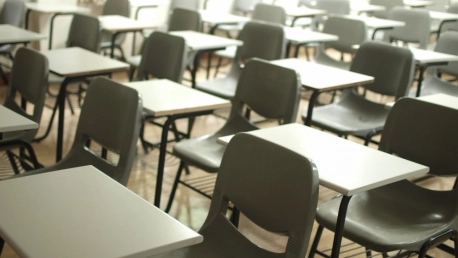According to the United Nations Educational, Scientific and Cultural Organization (UNESCO), the pandemic saw the closure of schools in over 100 countries around the world. One billion learners have been out of school, meaning that half of the world’s student population did not receive their usual standard of education.
In a study conducted by Onyema et al., 2020, it was found through a series of questionnaires that COVID-19 caused severe interruptions to education on a global level, and impacted learning in several ways.
Learning Disruptions and Boredom
One of the main ways in which education was affected by the pandemic was that of learning disruptions. These disruptions involved time off from studying whilst virtual learning was being set up. This gave way to time being wasted whilst the syllabus remained stuck. Such disruptions can break the routine of learners, making it harder for them to concentrate when they do go back to the education environment. Such gaps in education can result in lower exam grades and a lack of knowledge regarding certain topics (Onyema et al., 2020).
This problem leads the way for the next: the loss of interest in education. As time went by with no form of online learning for many countries, particularly the developing countries, there became a drastic lack of interest in education. The slow build-up of new routines gave learners another way of living, and many younger learners enjoyed the freedom from education, despite the increase in boredom. There is a possible psychological link between boredom and offending, as offending can provide the excitement that people need for gratification (Steinmetz, Schaefer & Green, 2017). Despite this possible link, statistics from the London School of Economics showed that crime figures dropped during the first wave of the pandemic due to heavy restrictions and the closure of non-essential shops.
Decreased access to education and research facilities
Whilst several countries practiced online learning for their students, many schools found that this was not enough. The decreased access to education and facilities deprived those who required physical support, such as physical or learning disabilities (Onyema et al., 2020).
Specific educational subjects also suffered from the pandemic, as practical work was forced to cease. Those in science-related subjects no longer had access to the equipment that was available in educational facilities, taking the practical element out of many topics covered. The lack of research facilities such as libraries also impacted education. Learning how to use a library is a critical aspect of education, as is learning to use its resources. To not have access to a library deprives learners not only of the skill to use them, but also of the valuable resources they have to offer.
Online learning: The positives and negatives
Online learning became extremely useful during the closure of schools and allowed learners to continue with their education despite the pandemic. They ensured that education for the masses continued, whilst also teaching them how to use technology for their studies. Understanding technology is an imperative skill to have, and as such, this form of learning was extremely valuable.
However, it is imperative to remember that many learners in developing countries did not have access to such technology, and therefore their education ceased (Munoz-Najar et al., 2021). Even in developed countries, many learners in poverty could not afford access to the necessary technology, and they also struggled to continue with their education.
For those who did have access, it was not a smooth transition. In many cases, education was hindered by poor infrastructures including networking, power, inaccessibility, and poor digital skills. In many cases, both teachers and students struggled to grasp the technological advancements, and many missed educational classes because of this. For those cases where the teachers did not understand how to use the technology, the class would have to stop whilst they solved the issue, thus cutting into the time students should have been learning.
Social isolation
One of the biggest impacts of the closure of educational facilities was the lack of social interaction, for learners of all ages, but especially children. Learning how to interact with others in a socially acceptable way is imperative to a child’s upbringing, and to take this away from them severely disrupts their cultural and social skills.
According to Duraku (2020), social isolation also harms the psychological aspects of mental well-being. Youngminds.org claims that the effects of social isolation include: loneliness, anxiety, and depression, and has the potential to trigger many other mental illnesses or learning disabilities. The lack of face-to-face interaction has the potential to trigger feelings of social anxiety, thus making it very difficult to go back to ‘normal’ once educational facilities reopened.
Results
A survey conducted in the UK funded by the Nuffield Foundation found a significant rise in emotional and behavioral difficulties among primary school children following the lockdown in 2020. Even when they returned to school, their emotional difficulties improved slightly but were still far worse in comparison to pre-pandemic days. This shows that the damage done from the lack of education and social interaction will take some time to repair, if that is possible at all.
As the pandemic is a recent occurrence, there are no long-term studies yet which can reflect on the permanent changes that have occurred as a result. Only time will tell what the long-term effects will be of the pandemic on education.









